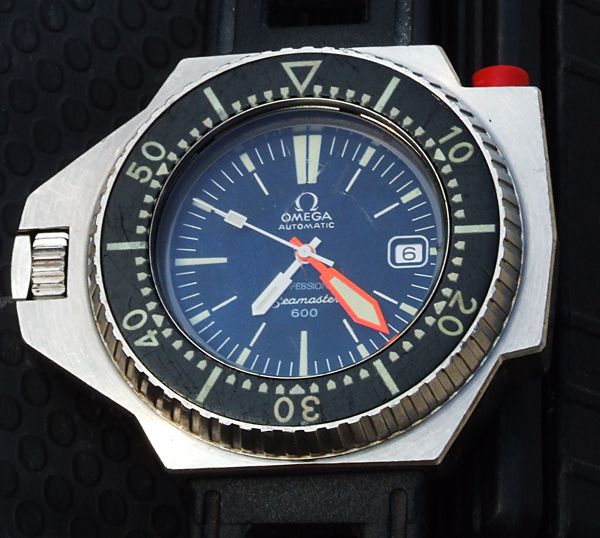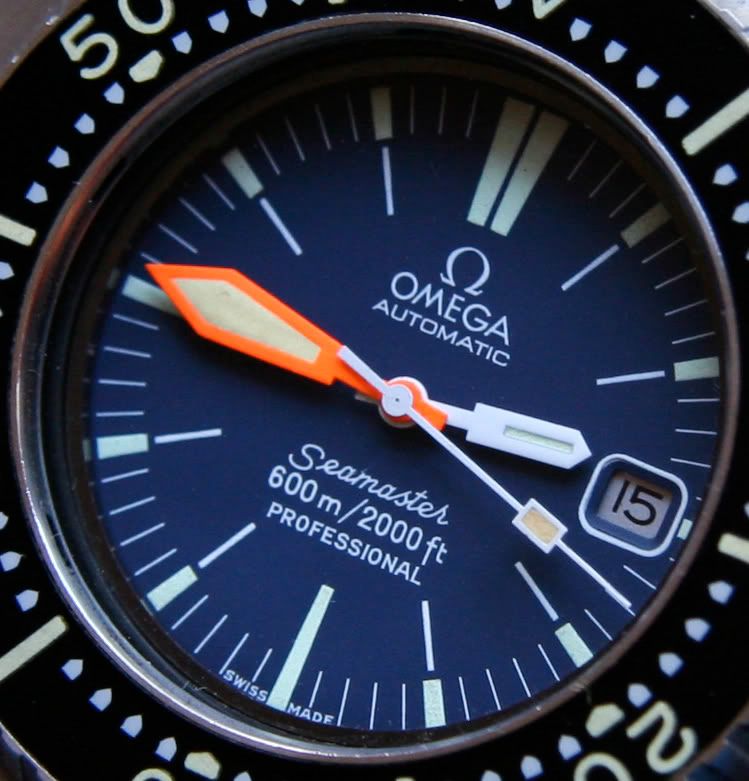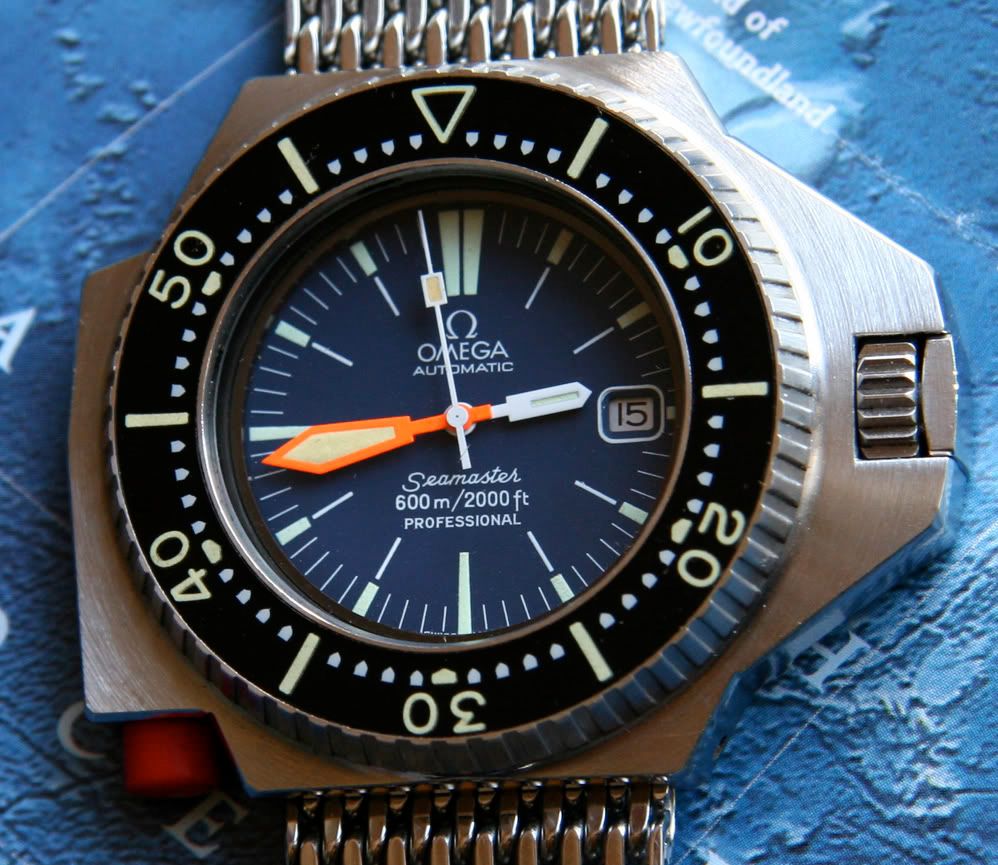
tomvox1
122

A humble observation that there are more than 3 types of vintage Ploprof dials (long)...
So when one searches for "Ploprof dials" one gets directed to the same litany of 3 accepted variations:
The Type I:

(Photo from Ploprof dot com)
The Type II:

(Photo from Ploprof dot com)
And the Type III (with full depth rating, usually Luminova replacement):

(Photo from the Watch-Setter)
However there is most
certainly at least one more variation from the period of original Ploprof
production and I believe it has been conflated with the Type III (I have been
guilty of this myself in the past). Here is a dial that most probably predates
the currently accepted "Type III" (should we call it the Type 2.5
or...?  )from a watch I once owned many moons ago:
)from a watch I once owned many moons ago:

As you can see clearly the luminous material is not shiny or puffy like the Luminova of the Type III but still granular like the earlier dials (Tritium? Who knows--Omega never marked the Ploprof with T for Tritium markings--likely a proprietary blend for their super divers but probably at least somewhat radioactive).
Also the fonts of the dial are clearly different than what is currently called the Type III:


You can see how much more clean and elegant the printing is (much less serif), which to me strongly indicates earlier production than the replacement dials for discontinued models. In fact, it strongly indicates the Luminova replacement dials were based on this last version of original Ploprof dial iteration.
Now you may ask where this dial fits in for such a "short-lived" watch as the original Ploprof if we already have 2 confirmed period original versions from the early 70s -- the Type I with "600" sandwiched between "Seamaster" and "Professional" and the Type II with "600" below the "Professional" and "Seamaster". However, and this may be a surprise to many, the Ploprof was not a very short-lived model at all. Omega's database lists it as being in the International Collection from 1970 to 1979, 10 full sales years. Now from what I have learned from other makes and models, there is plenty of room in that 9-10 years for Omega to change the fonts yet again and create a new version with both the full metric and imperial depth rating for added sales appeal across all international markets.
So I posit that the dial I am showing here (freely admitting I'm probably not the first to do so) was originally produced at some point in the 70s for the latter part of the Ploprof's original lifespan. Now, that doesn't mean it couldn't have been used after the Ploprof was discontinued and before the advent of the conventional "Type III" Luminova dial. After all there is a long way between 1979 and the beginning of the Luminova era. But I do believe that this dial can be found in original, late era Ploprofs and was installed from the factory when the watches were brand new.
Obviously movement serial number correlation might partially verify or disprove this theory about these "2.5" dials being period 70s Ploprof dials but that is also hard to get a decent sample size given the nature of the watch and the difficulty in opening the case. In my mind, however, there is no doubt that this is a fourth genuine Omega Ploprof dial and that it clearly predates the Luminova era and so cannot be called yet another "Type III" dial (really the Luminova version should be Type IV).
And for further proof even without serial number correlation, here is a verified and unmolested one-owner example, which was bought in the "late 70s" by a man who turned out to be a famous Oceanographer and diver as per Dr. Strong's remarkable & classic post right here on Purists' Omega Forum:
 (Photo from
Dr. Strong)
(Photo from
Dr. Strong)
Now tell me
that is not a period original dial! 
If you've made it this far thanks for reading and all opinions welcome,
T.

A humble observation that there are more than 3 types of vintage Ploprof dials (long)...

Tom, thanks for such an article. I will come back to it.

This will be very complicated...
